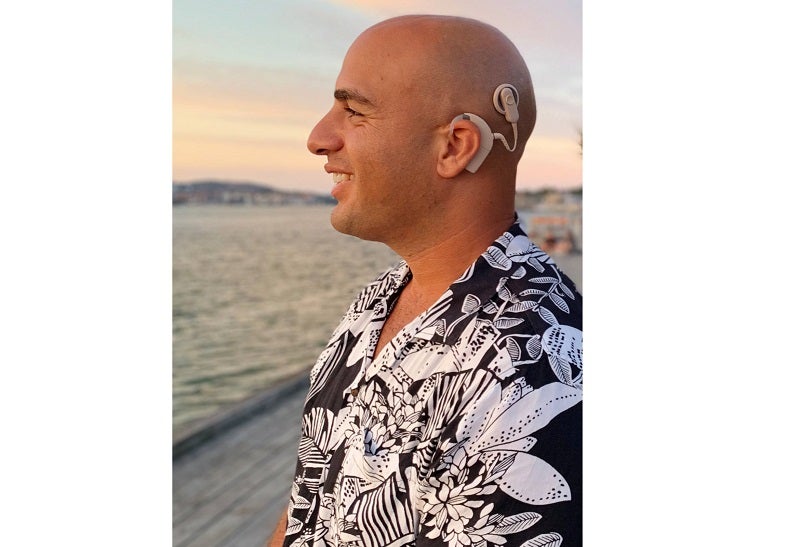
With more than 200 alloys to choose from and a specialisation in choosing the best materials and configurations, EXERA ® wire-based components have been used for a variety of applications, such as vascular therapy, biosensing and neurostimulation. One success story has been the use of Sandvik medical wire in cochlear implants.
Medical-device technology spoke with Jacob Johanen about his experience with a cochlear implant and how it has affected his life.
Before turning 20, Johanen was living a happy, functioning life. “Then suddenly everything changed,” Johanen explains, “It all started with pain in my back, I told my father about this and he suggested maybe I had kidney stones. So I go to the doctor, and they give me antibiotics. But soon I was getting dizziness attacks, everything would just feel like a roller coaster and I would get sick.”
Medical experts were stumped and didn’t know how to help. Soon after, Johnanen’s condition worsened. “I woke up and I heard a noise that no one else could hear, it was so loud that I couldn’t sleep. It was tinnitus. After two weeks it became very severe and it was very difficult to hear anything. Then one day my mother woke me up and realised I couldn’t hear my own voice.”
As Johanen’s condition got worse, and doctors were still trying to understand how to help, he found himself struggling. “At this time, I had to communicate via notes and I had to read lips. It was very exhausting and there were days that I was knocked out and puking. This happened for months at a time, it was like being tortured.”
Johanen tried a number of medications that helped to alleviate some of the symptoms but still found that hearing was difficult. Eventually, through a combination of medication, hard work to improve his lifestyle and alternative therapies, things were looking up. “I don’t know what I did right, but something changed. I was more stabilised, my hearing was still very bad, but my balance got better. The dizziness attacks decreased and finally, they stopped.”
At this point, Johanen was using a hearing aid to help him keep his daily routine, including studying and socialising. While he was hopeful, not being sure about how his condition would be day to day, or whether it would worsen, meant that planning ahead was difficult. “Every day was like waking up to a new me and I had some hope that it would stop, but it was only getting worse or better each day.”
Now married and at university with his life on track, Johanen’s condition suddenly took a turn for the worse. “One day when I was at the University, I was like really knocked out. I was terrified and I had to go to the hospital in my home city.”
Johanen was suffering from Cogan syndrome, a very rare rheumatic disorder that has no cure. “Cogans affects the hearing and balance system, but also often the eyes, including terrible eye inflammation. I had this on both eyes and it was really difficult most days because they are sensitive towards all kind of lights. It’s constantly painful and it’s really scary.”
This was when a doctor suggested a cochlear implant again, which Johanen had originally turned down. “The more I read, the more interested I became. I saw people talking about their experience and it was so good. At first, I had been resistant, but this changed and I was very eager to get it as soon as possible.”
With training for a new job on the horizon and plans for the future, Johanen agreed to the cochlear implant. “It took a couple of weeks for me to get the operation, and then I had to wait for approximately four weeks for it to be activated. The day of activation changed my life again. I hadn’t heard anything in my left ear for eight years.
“In the beginning few weeks, it was very different. In the first phase, the sounds sounded very artificial, like cartoons, to give my brain time to adjust.
“I was doing my university studies and I was able to hear my wife’s voice for the first time, because we had met when I was only using the hearing aid, so I had never heard her voice properly. With the cochlear implant, I could hear all the small sounds I haven’t heard for eight years.”
A cochlear implant works very differently to a hearing aid. Hearing aids amplify sounds so that damaged ears can detect them, whereas cochlear implants bypass any damaged sections of the ear and directly stimulate the auditory nerve.
Composed of three parts; the microphone, speech processor transmitter and the electrode array, the cochlear implant filters and converts sound energy into a numerical code which is transferred to the headpiece cord and then to the internal receiver via radio frequencies. These internal receivers are connected to an electrode implant inside the cochlea that stimulates the auditory nerves. Sandvik produces platinum and iridium alloys encased in silicone for the electrode array, and without these biocompatible and conductive wire components, cochlear implants would not be possible.
“Before I turn my cochlear implant on I hear silence,” Johanen explains. “Every morning I’m reminded what a difference it makes.”



